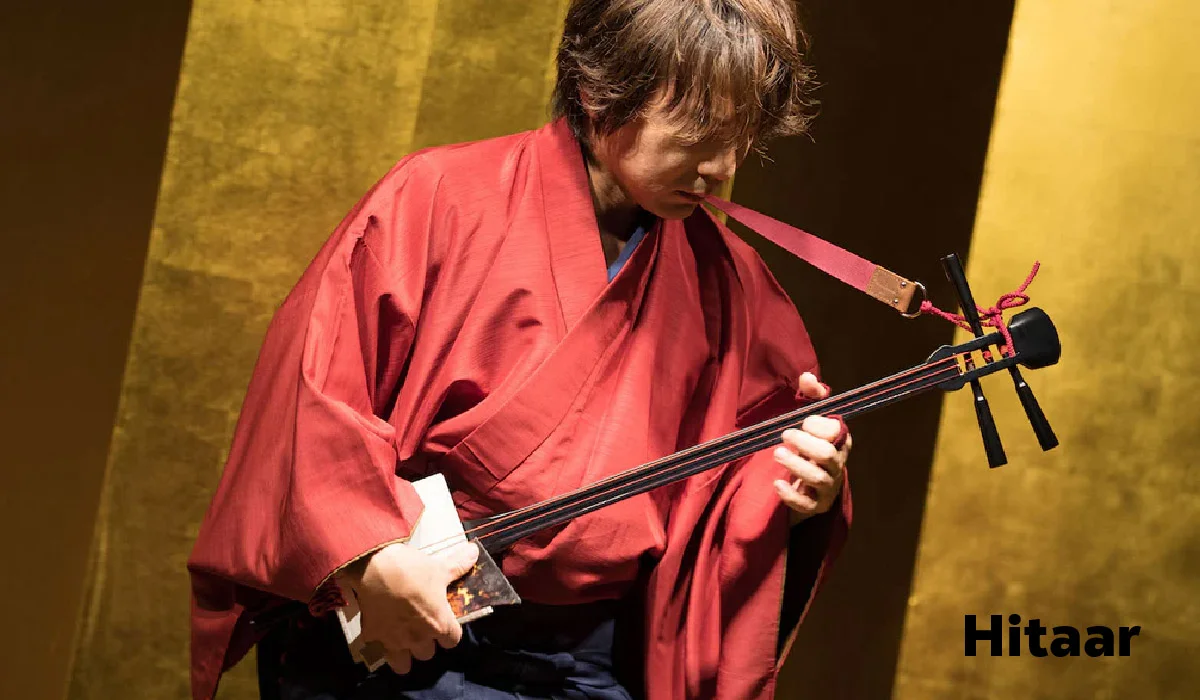Welcome to a captivating journey through the heart of Japan, where tradition and artistry intertwine in an enchanting dance known as Hitaar. This exquisite form of expression not only showcases the beauty of movement but also serves as a vibrant reflection of Japan’s rich cultural heritage. In this blog post, we will delve into the origins and significance of Hitaar, exploring its intricate choreography and the stories it tells. Join us as we uncover the rhythms that echo through time and discover how this mesmerizing dance continues to captivate hearts both at home and around the world. Get ready to be inspired by a celebration of grace, history, and passion—let’s step into the world of Hitaar!
Introduction to Hitaar: What is it and where does it come from?
Hitaar is not just a dance; it’s a vivid tapestry woven from the threads of history, culture, and emotion. Originating in Japan, this enchanting art form captures the essence of traditional Japanese life. With each graceful movement and intricate gesture, Hitaar tells stories that transcend time. It invites audiences into a world where rhythm and meaning intersect, allowing them to experience the beauty of cultural expression firsthand.
As we embark on this journey through Hitaar’s captivating landscape, you’ll discover its rich roots, symbolic significance, and the vibrant role it plays in contemporary society. Whether you’re an admirer of dance or simply curious about Japanese traditions, there’s something magical waiting for you within this unique performance art. Let’s dive deeper into the mesmerizing world of Hitaar together!
History of Hitaar: Origins and evolution of the dance
The history of Hitaar is deeply rooted in Japan’s rich cultural tapestry. This traditional dance has origins that can be traced back centuries, reflecting the lives and beliefs of ancient communities.
Initially performed during festivals, Hitaar was a way to honor deities and celebrate seasonal changes. The dance evolved from simple movements into a more structured form as it absorbed influences from various regions across Japan. Over time, it transformed through social shifts and artistic innovations. Each generation added its unique flair while preserving core elements, such as rhythm and storytelling.
Historical texts indicate that Hitaar’s significance grew in tandem with Japan’s national identity during the Edo period. As trade routes opened, dancers exchanged techniques with other art forms, further enriching Hitaar. Today, this enchanting performance continues to resonate with audiences worldwide while maintaining its historical essence.
Elements of Hitaar: Music, costumes, and movements involved in the performance
The essence of Hitaar lies in its captivating elements that come together to create an enchanting experience. Music plays a pivotal role, with traditional instruments like the shamisen and taiko drums setting the rhythm. The melodic tunes evoke emotions, guiding both dancers and spectators through a visual narrative.
Costumes are equally significant, reflecting Japan’s rich cultural heritage. Dancers often adorn themselves in beautifully crafted kimonos adorned with intricate patterns and vibrant colors. These garments not only enhance the aesthetic appeal but also symbolize various themes tied to nature or mythology.
Movements in Hitaar breathe life into the performance. Each gesture is deliberate and steeped in meaning, from graceful arm movements to precise footwork. The fluidity of these motions captures the attention while conveying stories deeply rooted in Japanese tradition. Together, music, costumes, and movement form an unforgettable tapestry that defines Hitaar as a cherished art form.
Symbolism in Hitaar: Meaning behind the different gestures and expressions
Hitaar is rich with symbolism, where every gesture conveys a deeper meaning. The intricate hand movements often reflect natural elements, such as wind or water. These gestures speak volumes without a single word being uttered.
Facial expressions are equally significant. A slight tilt of the head may express curiosity or contemplation, while an open smile can symbolize joy and harmony. Each performer embodies the spirit of their character through these subtle nuances.
The use of space in Hitaar also carries weight. Dancers skillfully navigate between closeness and distance to represent relationships—both personal and spiritual—creating an emotional landscape that resonates with audiences. Through these layers of expression, Hitaar evolves into a storytelling medium that transcends language barriers, inviting viewers to delve into its cultural depth and significance.
The Role of Hitaar in Japanese Culture: Importance and significance of this traditional dance
Hitaar serves as a vibrant thread in the rich tapestry of Japanese culture. This traditional dance embodies centuries of history and artistry, reflecting the unique values and beliefs of Japan. The performance often graces festivals and celebrations, fostering a sense of community and unity. Participants come together to share stories through movement, creating bonds that transcend generations.
Moreover, Hitaar is not just entertainment; it’s an expression of identity. Each gesture carries meaning that resonates deeply with viewers. The rhythm and style evoke feelings tied to nature, spirituality, or seasonal changes.
In today’s fast-paced world, Hitaar acts as a reminder of cultural roots. It encourages younger generations to explore their heritage while honoring those who came before them. Through this dance form, tradition endures and evolves within contemporary society.
Steps to Learn Hitaar: Tips for beginners interested in mastering the art form
Starting your journey in Hitaar can be both exciting and challenging. First, immerse yourself in the history and essence of this traditional dance. Understanding its roots will deepen your appreciation. Next, consider taking classes with a knowledgeable instructor. Finding someone experienced is crucial for mastering techniques, as they can provide personalized feedback.
Practice regularly to develop muscle memory. Focus on small movements before progressing to full routines. Consistency is key. Recording your practice sessions may also help you identify areas for improvement. Watching yourself perform allows you to refine gestures and expressions.
Finally, join local workshops or community groups focused on Hitaar. Connecting with fellow enthusiasts fosters motivation and creates opportunities for collaboration while enhancing learning experiences through shared insights and performances.
Cultural Significance: How Hitaar promotes cultural preservation and unity
Hitaar serves as a vibrant thread in the rich tapestry of Japanese culture. Through its rhythmic movements and expressive gestures, it tells stories that resonate deeply with both performers and audiences alike. Each performance is a homage to Japan’s storied past.
By engaging communities in this traditional art form, Hitaar fosters connections among generations. Younger dancers learn from their elders, preserving techniques and narratives often lost in modernity. This exchange of knowledge enriches cultural identity.
Moreover, Hitaar transcends regional boundaries within Japan. As diverse styles merge during festivals or collaborative performances, it creates a sense of unity among different locales. These gatherings celebrate shared heritage while allowing individual expression.
Ultimately, participating in Hitaar cultivates respect for traditions while embracing diversity within the culture itself. It stands as a reminder of the importance of collective memory in maintaining one’s roots amidst an ever-changing world.
How Hitaar has evolved with time while still maintaining its traditional roots
Hitaar has gracefully adapted to the changing cultural landscape while holding onto its historical essence. Contemporary choreographers infuse new themes and narratives, reflecting modern societal issues and concerns.
Dance companies now experiment with fusion styles, blending Hitaar with elements from other dance forms. This experimentation attracts diverse audiences and keeps the tradition alive. Costume designs also see innovation. While traditional garments maintain their significance, vibrant colors and textures are introduced to captivate younger generations.
Technology plays a role, too. Online platforms enable wider dissemination of performances. Virtual classes make learning Hitaar accessible worldwide, inviting enthusiasts from diverse backgrounds.
Despite these changes, the core principles of Hitaar endure—expressive movements remain rooted in storytelling and emotional depth. The balance between evolution and tradition ensures that this enchanting dance continues to resonate through time.
Famous Performances: Highlighting notable performances and dancers in
Famous Performances: Highlighting notable performances and dancers in Hitaar is an exciting journey through the rich tapestry of this traditional Japanese dance. Renowned performers have brought their unique flair, captivating audiences with their skillful expressions and intricate movements.
One standout figure in the world of Hitaar is Kisaragi Yoko, a dancer celebrated for her innovative interpretations while honoring traditional techniques. Her performances often feature stunning costumes that reflect historical themes, enchanting viewers, and bringing them into the heart of Japan’s cultural heritage.
Another remarkable performer is Yamazaki Haruto, known for his dynamic choreography that marries classical elements with modern styles. His ability to connect emotionally through gestures captivates both seasoned enthusiasts and newcomers alike.
Festivals across Japan frequently showcase extraordinary Hitaar performances, drawing crowds eager to witness this lively art form firsthand. Events like the Gion Matsuri Festival showcase local talents that preserve regional variations of Hitaar, ensuring its legacy endures within various communities.
The blend of history and artistry present in these performances creates a vibrant dialogue between past and present. It reminds us all how essential it is to cherish traditions even as they evolve over time. As we celebrate the notable contributions of these dancers to Hitaar, we also honor the ongoing story that connects generations through movement, music, costume design, and expression. The future will surely see more breathtaking renditions as new talent emerges from every corner of Japan’s rich cultural landscape.


[…] You Might Also Like : Hitaar […]
[…] With each passing year, Insetprag has gained traction as businesses recognize its value in navigating complexities and fostering collaboration across disciplines. The momentum continues to build as more people seek effective solutions amid rapid change.Readmore…. […]